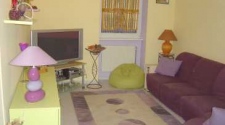The summer months call for regular BBQ’s and time spent lounging in the sunlit garden with friends and family. Despite months of lawn and flower bed maintenance, the garden can be a tough place to tackle, especially during this season as the likelihood of dry mud patches and other summer-related garden disasters begin to manifest. However, there are ways to combat common garden disasters and make your guests and neighbours red, yellow and green with garden envy so get ready, get set and go!
Red
A splash of red and a dash of floral aroma can really help to bring your garden to life, not to mention fill in those dry patches of soil and the empty flower bed. There are quite a few seasonal flowers that you can plant that will simply look divine; below we have listed a few summery flowers that can help to transform your garden into a flora wonderland.
Roses
The great thing about roses is that if you’re planning to keep them contained, they can be planted all year round making them an ideal choice for a late summer/autumn bloom. Also, although you might find they’re a bit costly depending on where you go to purchase the seeds, they look beautiful and you can get the kids involved with a spot of gardening too; they could paint the tubs or turn it into a competition by popping their name on the tub and see whose grows the biggest or quickest! The difficulty for growing this flower is often moderate and requires quite a lot of growth and aftercare; this short guide shows you how to grow and care for your roses.
Poppies
Like roses, poppies can be grown in containers or in well-kept soil so it’s your choice how you choose to grow this flower. Also, there are several variations of this species of flower and choosing will depend on whether or not you want to keep them in containers; either looks great and can help to spruce up the appearance of your garden. This short guide will show you how to grow poppies.
Fuchsias
Fuchsias hold a beautiful pink-red colour and tend to bloom from summer to autumn so if you’re planning to grow this flower, you better be quick! These flowers are quite easy to grow and will make the perfect addition to your summer garden. Like poppies, there are several different variations, each with their own characteristics so it may be worth doing a bit of research to find the most ideal colour and size for your garden. Here is a short guide on how to grow fuchsias.
Yellow
If you have a pet, you’ll know the sadness of spending hours in the garden to find that your flower beds and freshly-cut lawn has been dug up or holds that familiar unpleasant smell. To help protect your garden goods, it may be worth putting up a picket fence (with a gate) around your flowers to stop your lively pet in their tracks and what better way to add to the appearance of your garden than with a yellow fence! Though it’s something you don’t see very often, yellow is a brilliant colour to use for your garden furniture as even during the winter it’ll help give the place some life. From pastel yellow benches to a vibrant yellow shed, there are so many options with this colour and it’s sure to make an impression on your guests!
If you don’t fancy painting your furniture yellow, there are little things you can do. You could invest in a yellow kiddie’s watering can so your little ones can help you with the gardening or a straw basket to keep your potted plants in; you can hang it up or place it on the window sill to add visual appeal to your home and garden.
However, if you really want to push the boat out, you can create your very own miniature yellow brick road (or path in this case). You can either invest in a pale or even vibrant yellow brick path or you could line the path with yellow flower bushes if you don’t fancy being that adventurous. Alternatively, if you want to achieve both and you’re feeling artistic, you and the kids could paint a few pictures using different colours on the path; as an example, you could do footprints leading up to the house to help leave a temporary summer mark on your holidays.
Green
Our last stop is the lawn; we’re all familiar with the classic ‘dry, patchy, overgrown grass’ scenario,however, instead of getting the lawn mower out and spending hours going over the same patch, there’s a much easier solution. Artificial grass has witnessed a significant rise in popularity over the past few years and for good reason; not only can it help to eliminate the stresses associated with heavy garden maintenance with their little to no care promise, they look lovely all year round. They are also very easy to clean which is handy if you have a pet and helps to prevent dry mud patches as well as flooding as they drain water quickly and tend not to suffer under extreme weather conditions.
Lastly, fake lawnscost a small amount to install and purchase making them a cost-effective and time-efficient alternative to natural grass.
So there you have it! Our red, yellow and green guide to making your neighbours, well… red, yellow and green with envy!












